#oryx gazella
Explore tagged Tumblr posts
Text
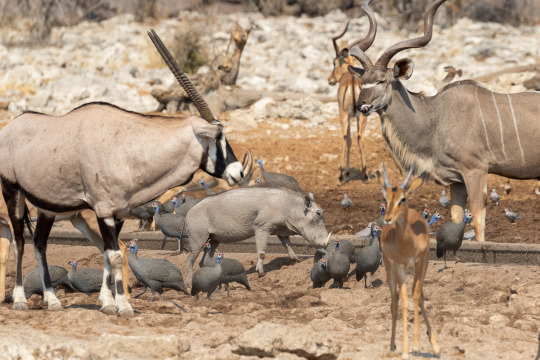
Black-faced impala Aepyceros petersi, front, middle left, and back
Gemsbok Oryx gazella, middle left
Southern warthog Phacochoerus africanus sundevallii, middle
Southern greater kudu Tragelaphus strepsiceros strepsiceros, middle right
With helmeted guineafowl Numidia meleagris, middle and back left, and ring-necked dove Streptopelia capicola, back right
Observed by igal_oz, CC BY-NC
#multi-ungulate#Aepyceros petersi#black-faced impala#Oryx gazella#gemsbok#Tragelaphus strepsiceros strepsiceros#southern greater kudu#Bovidae#antelope#Phacochoerus africanus sundevallii#southern warthog#Suidae#pig#Numidia meleagris#helmeted guineafowl#landfowl#Streptopelia capicola#ring-necked dove#pigeon#bird#non-ungulate#Africa#Namibia
40 notes
·
View notes
Text
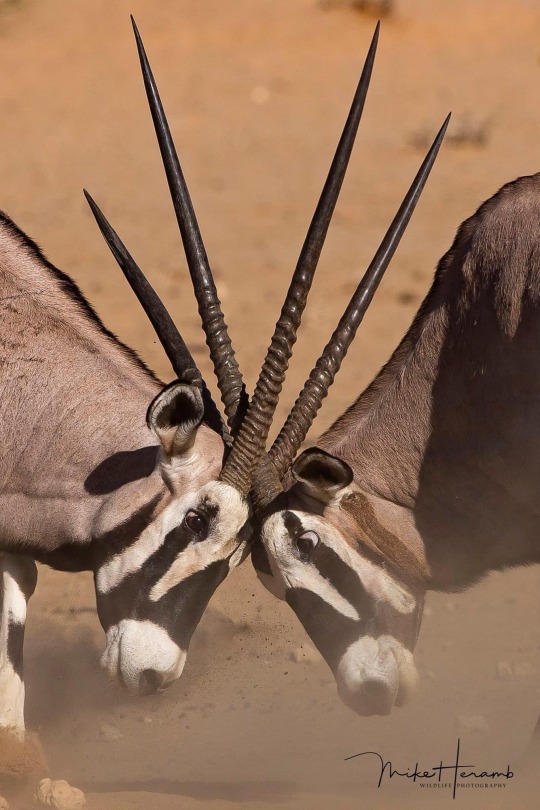
Gemsbok | Mike Heramb
27 notes
·
View notes
Photo
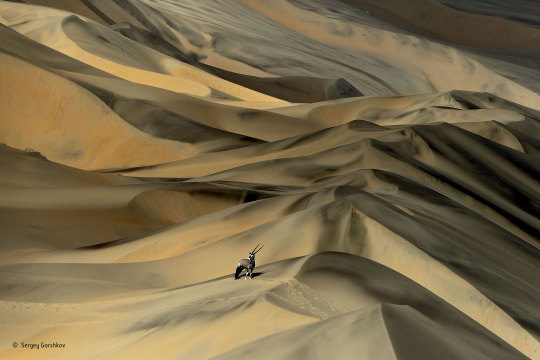
Gemsbok (Oryx gazella) in sand dunes, Namibia
Photographed by Sergey Gorshkov
214 notes
·
View notes
Text
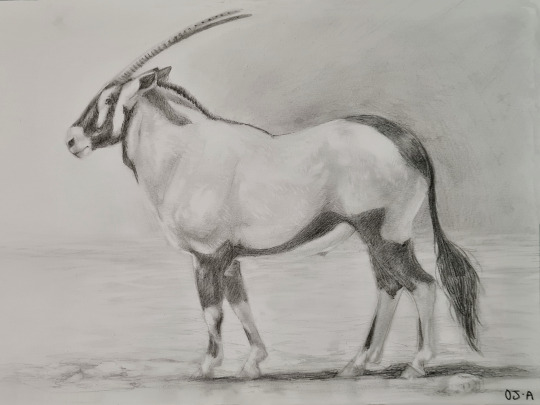
graphite gemsbok, graphite on A4 sketching paper.
my favourite thing to do while I'm making art is watch the NamibiaCam livestreams. to celebrate that, I wanted to sketch one of the more commonly seen animals on the stream, the Gemsbok (Oryx gazella).
#art#drawing#traditional art#sketch#graphite#pencil drawing#original art#gemsbok#african animals#namibia#namibiacam#oryx#oryx gazella#my art
8 notes
·
View notes
Text

Gemsbok aka South African Oryx (Oryx gazella), family Bovidae, Southern Africa
photograph via: Weltevreden Game Lodge
614 notes
·
View notes
Text









1. Addax nasomaculatus (addax) | 2. Litocranius walleri (gerenuk) | 3. Tragelaphus eurycerus (bongo) | 4. Oryx gazella (gemsbok) | 5. Bos taurus (Aubrac cattle) | 6. Ovis canadensis (bighorn sheep) | 7. Sivatherium | 8. Pakicetus | 9. Diceros bicornis (black rhinoceros)
#could it be...... that I'm finally posting those ungulates...... woah#forgot about this project for a second but here are the sketches I got done#not saying I won't ever continue but thank you all for suggestions and apologies to those whose fave ungulates I didn't yet get to#I have always liked oryxes they are so massive but also so sharply shaped#new among my favourites is the bongo! Hadn't ever looked into those guys and shame my willppoer ended before I got to colours#very shaped creature very shaped horns very nice sharp stripes! and their striped mane going all the length of their back! very colored als#but glad there's love to all kinds of ungulates out there <3#also shoutout to our ancient boy shivatherium and even more ancient boy pakicetus bringing the era diversity here#what sparked my obsession this time was looking into all kinda prehistoric carnivore ungulates that had existed
250 notes
·
View notes
Text
Word List: Animals

for your next poem/story
Aardwolf - a maned striped nocturnal mammal (Proteles cristatus) of southern and eastern Africa that resembles the related hyenas and feeds chiefly on insects and especially termites
Bittern - any of various small or medium-sized, short-necked, usually secretive herons
Chevrotain - (also called mouse deer) any of several very small hornless deerlike ruminant mammals of tropical Asia, the Malay archipelago, and West Africa superficially resembling the musk deer, the male having short tusks, and being among the smallest known ruminants, standing only about a foot high
Douroucouli - (also called owl monkey) any of several small nocturnal monkeys (genus Aotus) of Central and South American tropical forests that have round heads, large eyes, and densely furred bodies
Eland - either of two large African antelopes (Taurotragus oryx and Taurotragus derbianus) bovine in form with short spirally twisted horns in both sexes
Falconet - any of several very small falcons
Gemsbok - a large and strikingly marked oryx (Oryx gazella) formerly abundant in southern Africa
Hoatzin - a crested large South American bird (Opisthocomos hoazin) with blue facial skin, red eyes, brown plumage marked with white above, and claws on the first and second digits of the wing when young
Ichneumon - a mongoose (Herpestes ichneumon) of Africa, southern Europe, and southwestern Asia
Jacana - any of a family (Jacanidae) of long-legged and long-toed tropical wading birds that frequent coastal freshwater marshes and ponds
Klipspringer - a small antelope (Oreotragus oreotragus) that is somewhat like the chamois in habits and is found from Cape Colony to Somaliland
Lammergeier - a large Old World vulture (Gypaetus barbatus) that occurs in mountainous regions, has long black bristles at the base of the bill, and in flight resembles a very large falcon; bearded vulture
Muntjac - any of a genus (Muntiacus) of small deer of southeastern Asia with an alarm call similar to the bark of a dog and having in the male elongated, downward-pointing upper canine teeth which protrude from the lip and short, usually unbranched, pointed antlers; barking deer
Nightjar - any of a family (Caprimulgidae) of medium-sized long-winged crepuscular or nocturnal birds (such as the whip-poor-wills and nighthawks) having a short bill, short legs, and soft mottled plumage and feeding on insects which they catch on the wing
Ouzel - blackbird
Palfrey - archaic: a saddle horse other than a warhorse; especially: a lady's light easy-gaited horse
Quetzal - a Central American trogon (Pharomachrus mocinno) that has brilliant green plumage above, a red breast, and in the male long upper tail coverts
Rosella - an Australian parakeet (Platycercus eximius) often kept as a cage bird having the head and back of the neck scarlet and the cheeks white, the back dark green varied with lighter green, and the breast red and yellow
Springhare - jumping hare i.e., a sciuromorph rodent (Pedetes cafer) of southern and eastern Africa that resembles a kangaroo in form, that is about two feet long, and that is tawny brown in color and of nocturnal and social habits
Thylacine - Tasmanian tiger i.e., a somewhat doglike carnivorous marsupial (Thylacinus cynocephalus) that formerly inhabited Tasmania but is now considered extinct
Uintatherium - a genus (the type of the family Uintatheriidae) of large herbivorous ungulate mammals of the order Dinocerata from the Eocene of Wyoming resembling elephants in size and in the conformation of their limbs and having three pairs of bony protuberances respectively on the parietal, maxillary, and nasal bones of the skill, a pair of canine tusks guarded by downwardly directed processes of the lower jaw but no upper incisors, and a proportionately very small brain
Vaquita - a small, highly endangered porpoise (Phocoena sinus) of the Gulf of California having a dark ring around the eyes and reaching only four to five feet (1.2 to 1.5 meters) in length
Whitecoat - a very young hair seal and especially a harp seal
Xiphias - a genus (the type of the family Xiphiidae) of large scombroid fishes comprising the common swordfish
Zho - (also called dzo) a hybrid between the yak and the domestic cow
More: Word Lists
#animals#word list#writing inspiration#writeblr#langblr#dark academia#writing reference#spilled ink#creative writing#linguistics#words#light academia#literature#writers on tumblr#poets on tumblr#writing prompt#poetry#adriaen van de velde#writing resources
120 notes
·
View notes
Text

By Bernard DUPONT from FRANCE - Gemsboks (Oryx gazella) mock fighting …, CC BY-SA 2.0, Link
21 notes
·
View notes
Text


Gemsbok (Oryx gazella), Daniel Sharpe (2025)
Koi pond, Daniel Sharpe, 2024
6 notes
·
View notes
Text
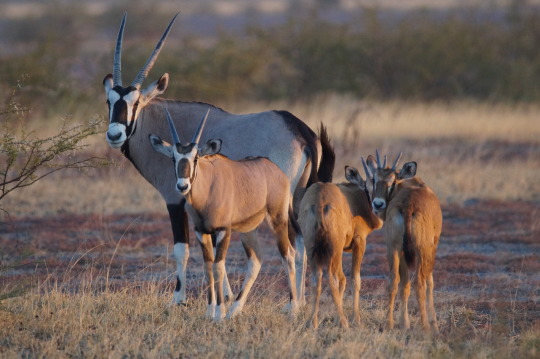
Gemsbok Oryx gazella
Observed by caro_pietjouw, CC BY-NC
50 notes
·
View notes
Text
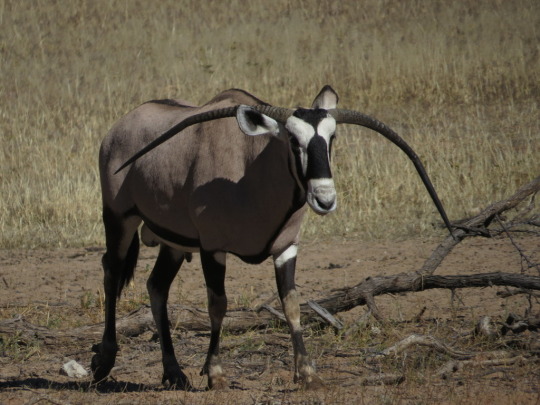
Gemsbok | Gawie Malan
7 notes
·
View notes
Text



Spießböcke oder Südliche Oryx | Gemsbok or South African Oryx
Oryx gazella
[Serengetipark Hodenhagen]
0 notes
Text
Wildlife Wonders and Adventures on a Desert Safari Journey
The vast expanse of the desert may seem barren at first glance, but beneath its golden sands lies a world teeming with life and surprises. A desert safari is not just an exhilarating adventure through towering dunes but also an opportunity to discover the incredible wildlife that thrives in this harsh yet beautiful environment. From elusive predators to resilient creatures that have adapted to the desert’s extreme conditions, the UAE desert is a treasure trove of wildlife wonders. Here’s a closer look at the unique wildlife you might encounter and the thrilling adventures that await on a desert safari journey desert adventures tourism dubai
1. The Fascinating Desert Ecosystem
The desert is often thought of as a barren wasteland, but in reality, it’s a highly complex and diverse ecosystem. In the UAE, the desert is home to a wide range of wildlife that has adapted to survive in the extreme heat, arid conditions, and scarcity of water. During a desert safari, visitors can experience firsthand how these animals have evolved to thrive in such a challenging environment.
The unique desert ecosystem consists of both flora and fauna that have adapted over thousands of years. For example, many desert plants have deep root systems to access underground water, while animals have developed specialized physical traits to conserve moisture and regulate their body temperatures.
2. Iconic Desert Species: The Arabian Oryx
One of the most iconic creatures that you may encounter on a desert safari is the Arabian Oryx, a species once considered extinct in the wild but now thriving in protected reserves. This majestic animal, with its striking white coat and long, curved horns, is a symbol of the UAE’s conservation efforts. Arabian Oryx are well-adapted to desert life, with thick fur that insulates them from the extreme temperatures.
Often seen grazing on desert plants or lounging in the shade of small desert trees, the Arabian Oryx is a beautiful sight and a testament to the UAE’s successful wildlife conservation programs. Many safari tours include visits to protected wildlife reserves where you can spot these remarkable animals in their natural habitat.
3. The Elusive Arabian Red Fox
Another fascinating creature found in the UAE desert is the Arabian Red Fox, a small but highly adaptable predator. Known for its large ears and slender body, the Arabian Red Fox is well-suited to the harsh desert environment. It uses its keen sense of hearing to track prey like rodents, lizards, and insects, and its large ears help dissipate heat during the hot desert days.
While spotting this elusive fox in the wild may require a bit of patience, desert safari guides are well-versed in tracking the movements of these and other animals, increasing your chances of an exciting wildlife encounter.
4. The Majestic Sand Gazelle
The Sand Gazelle, or Gazella subgutturosa, is another species commonly spotted during desert safaris. Known for their grace and agility, these gazelles are built for speed, allowing them to outrun predators in the open desert. Their light tan coats help them blend into the sandy landscape, making them difficult to spot at first glance.
The sight of a group of Sand Gazelles leaping across the dunes is a breathtaking moment during a safari. These animals are a reminder of the adaptability and resilience of life in the desert, where every creature has evolved to survive in the harshest conditions.
5. The Beauty of Birdlife in the Desert
While mammals dominate the desert landscape, the UAE desert is also home to a diverse range of bird species. The desert is a crucial stop for migratory birds traveling between Europe, Africa, and Asia, and a desert safari provides the perfect opportunity to spot some of these fascinating avian creatures.
Desert Larks: These small, unassuming birds are a common sight in the desert, often seen hopping along the dunes in search of insects.
Sooty Falcon: A majestic bird of prey, the Sooty Falcon can often be seen soaring over the desert in search of small mammals and birds.
Steppe Eagle: One of the larger raptors, the Steppe Eagle is known for its impressive hunting skills and can often be spotted perched on high dunes.
Birdwatching is an essential part of any desert safari, and for bird enthusiasts, it’s an exciting way to connect with the desert’s natural beauty.
6. Unique Desert Adventures and Activities
In addition to wildlife spotting, a desert safari is filled with a variety of thrilling activities that allow you to engage with the desert landscape in exciting and adventurous ways.
Dune Bashing: The thrill of dune bashing is a key part of any desert safari. Riding in a powerful 4x4 vehicle, you’ll race up and down the towering sand dunes, providing a rush of adrenaline as you get up close to the desert’s ever-changing terrain. Though thrilling, the experience also allows you to spot wildlife that may be hiding among the dunes or in the surrounding desert shrubs.
Sandboarding: For those seeking a unique adventure, sandboarding offers the chance to glide down the dunes on a specially designed board, offering a combination of excitement and scenic views of the desert.
Camel Riding: No desert safari is complete without a ride on the “ship of the desert.” A slow, steady camel ride offers a unique vantage point to observe the wildlife in the desert. As you ride, you may spot desert creatures in their natural habitat while enjoying the tranquil beauty of the sands.
7. The Thrill of Nighttime Wildlife Spotting
For those looking to experience a different side of the desert, some desert safari tours offer nighttime adventures. As the temperature drops and the desert cools, many nocturnal creatures emerge to hunt and forage. The quiet of the night makes it an excellent time for spotting wildlife that is more elusive during the day.
Guides often use infrared lights to help spot animals like desert hedgehogs, nocturnal rodents, and even the occasional fox. Stargazing in the desert at night is another highlight, as the lack of light pollution provides a clear view of the night sky, adding an extra layer of magic to your safari experience.
8. Conservation Efforts and Sustainable Tourism
As interest in desert safaris grows, so does the importance of preserving the desert’s unique wildlife. Many safari operators in the UAE are actively involved in wildlife conservation, ensuring that the delicate desert ecosystem is protected for future generations. Participating in a wildlife-focused desert safari not only provides you with an unforgettable adventure but also supports conservation efforts aimed at preserving endangered species like the Arabian Oryx and the Sand Gazelle.
A desert safari in the UAE offers much more than just an adrenaline rush across the sand dunes. It’s an opportunity to immerse yourself in the wonders of the desert’s wildlife, from the majestic Arabian Oryx to the elusive Red Fox. With a variety of thrilling activities and the chance to spot desert creatures in their natural habitat, a desert safari is the ultimate adventure for nature lovers and wildlife enthusiasts alike. Whether you’re exploring the desert by day or night, the UAE’s desert safari experiences promise an unforgettable journey into the heart of one of the world’s most unique and awe-inspiring ecosystems Dubai desert safari
0 notes
Text

I love you forever Oryx gazella
1 note
·
View note
Text

2023 : ‘Uruq Bani Ma’arid. Arabie saoudite
Le bien englobe la partie occidentale de la plus grande étendue de sable soufflé par le vent sur Terre, connue sous le nom d'Ar Rub' al-KhaIi, et conserve une partie de l'un des paysages désertiques les plus spectaculaires de la planète. La topographie variée du site crée une large gamme d'écosystèmes. Le site est mondialement connu pour la réintroduction d'animaux emblématiques du désert, notamment l'oryx d'Arabie (Oryx leucoryx) et la gazelle des sables d'Arabie (Gazella marica). Les dunes mobiles constituent également un habitat excellent et bien oxygéné pour les invertébrés et les reptiles qui plongent dans le sable, tandis que les oueds encaissés dans le plateau calcaire abritent des plantes reliques rares.
0 notes
Text

Kalahari Morning - by Mario Moreno
A Gemsbok also known as Oryx (Oryx gazella) captured in the early hours on the pans of Deception Valley in the Central Kalahari Game Reserve in Botswana. This is a large antelope in the Oryx genus. It is native to the arid regions of Southern Africa, gemsbok. Although some superficial similarities in appearance (especially in the facial pattern) are noticed, such as the Kalahari Desert. The name "gemsbok" in English is derived from Afrikaans gemsbok, the chamois and the oryx are not closely related., which itself is derived from the Dutch name of the male chamois.
If you would like to join us on an upcoming Photographic Tour please go to
www.southcapeimages.com
0 notes